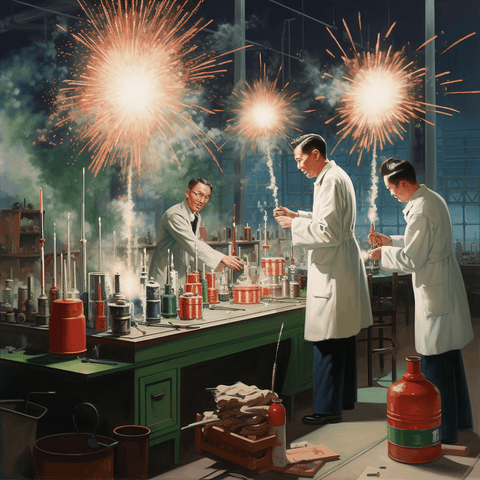
How Do Fireworks Work: The Science Behind the Sparkles
Fireworks are a traditional part of many celebrations and events, from New Year's Eve to Independence Day. But how do fireworks actually work? What causes them to light up the sky with bursts of colour and light?

At their most basic level, fireworks are simple devices that contain a combination of explosive materials and chemicals that produce light and colour when ignited. The basic components of a firework include a fuse, a lifting charge, a shell, explosive black powder, and metal salts.
The fuse is what sets off the firework, burning at a controlled rate until it reaches the lifting charge. This charge propels the shell into the air. Once the shell is in the air, it explodes, creating a spectacular display of light and colour.
The explosive black powder is what actually causes the explosion. When ignited, the black powder rapidly burns, producing a large amount of gas and heat. This gas creates pressure inside the firework shell, causing it to explode and propel the chemicals inside in every direction.
The metal salts are what give fireworks their colours. Different metal salts produce different colours when they are heated. Here are some examples of the colours produced by certain metals:
- Strontium salts produce a deep red colour
- Copper salts produce blue colours
- Barium salts produce green colours
- Sodium compounds produce bright yellow colours
- Calcium salts produce an orange colour
- Potassium salts produce a purple or lilac colour
The exact shade of colour produced can depend on the temperature at which the metal salts burn, as well as other factors such as the amount of oxygen present and the rate of combustion. Firework manufacturers carefully control the chemical compositions of their fireworks to produce specific colours and effects, resulting in the dazzling displays that we enjoy today.
Once the shell explodes, the metal salts inside are heated and emit light in a process called incandescence. This is what creates the vibrant colours that make fireworks so visually stunning.

The timing of each explosion is carefully controlled to create the specific display that the designer has in mind. The arrangement and design of the firework shell and the amount of explosive material inside are also carefully calibrated to produce the desired effects.
Overall, fireworks are a complex combination of physics and chemistry that come together to create a dazzling display of light, colour, and sound. Whether you're enjoying them on the Fourth of July or during a New Year's celebration, understanding how they work can make the experience all the more enjoyable.

